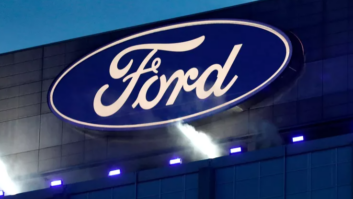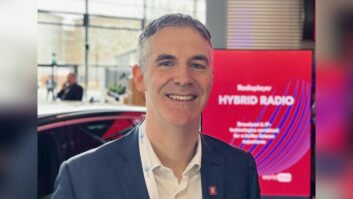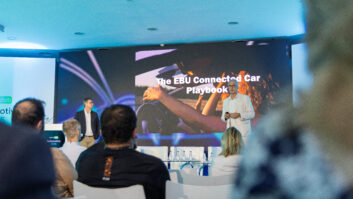
GENEVA — RadioDNS held its 10th General Assembly on Feb. 9, during the European Broadcasting Union’s Digital Radio Week. While the morning session was “members only,” the RadioDNS’ Open Conference, held that afternoon, welcomed delegates and hybrid radio enthusiasts from around the world.
Mathias Coinchon, EBU senior project manager, opened the discussion, then Nick Piggott, RadioDNS project director, focused on the organization’s goals achieved in 2015 as well as on future plans.
PROJECT LOGO
“Project Logo is our project to encourage broadcasters to commit themselves to hybrid radio and to create content that manufacturers can rely on for their devices,” Piggott said. In order to keep the overall hybrid radio environment healthy and growing, broadcasters need to consistently and widely provide metadata, while receiver manufacturers also need to ensure that minimum metadata set is provided.
Project Logo specifies the minimum metadata radio stations need to provide. To ensure a sustainable effort by broadcasters, the metadata can be obtained from existing sources, such as FM-RDS RT and digital radio Slideshow. As regards the availability of receivers, “it is not a widely promoted feature, but RadioDNS is currently implemented on many Samsung Android mobile phones with FM tuner enabled,” Piggott said.
This raises the number of RadioDNS-capable devices on the market to more than 21 million in Europe. With Project Logo, broadcasters can see the traffic moving from RadioDNS receivers to their DNS content servers. “Broadcasters offering RadioDNS and Project Logo can clearly detect how many devices are trying to connect to their RadioDNS slides or hybrid content. Devices send their requests including a specific sequence, which can clearly identify the requesting device. In some cases broadcasters reported hundreds of thousands of hits from Samsung devices” Piggott said.
RadioDNS goals for this year include developing an automated, Web-based certification platform to provide equipment manufacturers with an inexpensive yet reliable tool to check their products and progress. The online platform automatically tests a range of capabilities and returns the result of each test that has been carried out. Piggott played a video to show the audience how fast and simple the whole process is.
RadioDNS trademark regis

trations are in progress worldwide, including China and the United States. “The RadioDNS logo ensures that the device you are buying (or the service you are offering) is compliant to the standard. It allows business-to-business confidence,” Piggott said.
CAR MANUFACTURERS
During the event, Coinchon also discussed developments in technical standards. “RadioDNS standards are published as ETSI standards,” he said. “This is a great achievement because ETSI means the standard is ‘industry grade.’ We also added DAB and DRM, to have the same hybrid standard for any radio broadcast.”
Holger Hees, responsible for onboard broadcast radio and TV at Audi AG gave the car manufacturer’s perspective of the future connected radio. According to Hees, a great hybrid radio experience requires a standardized interface (to reduce costs for both broadcasters and manufacturers), high-value content and high broadcaster participation.
“We ask broadcasters to air higher resolution images, since on-board entertainment systems now feature HD screens,” Hees said. “RadioDNS is the missing link among broadcast, IP, radio stations and manufacturers. We will be ready to merge the worlds of broadcast and IP in the near future.”
The Assembly was streamed live and allowed audience interaction via social media. One question sent via the Web became the theme of the final discussion panel — “What is the killer application for hybrid radio?”
The panel did not endorse a single answer, but speakers highlighted that hybrid radio should bring increased simplicity. This from the listener’s point of view by seamlessly merging data and information from any available data source (digital radio, IP, FM), and from the broadcaster’s point of view by providing the easiest way to create and deliver metadata, since radio stations often do not have the resources to manage additional complex processes.
The speakers agreed that RadioDNS has the capabilities offer this and is heading in the right direction.
Also during the General Assembly, the consortium announced changes to its steering board. Mathias Coinchon will now chair RadioDNS, assisted by Floris Daelemans of VRT in Belgium, as secretary, and Joe D’Angelo of DTS (formerly iBiquity/HD Radio) was elected as the second RadioDNS representative to the board in the United States.
RadioDNS’ Open Conference available on demand here.







